

List of fallacies. Divergent thinking. Divergent thinking is a thought process or method used to generate creative ideas by exploring many possible solutions.
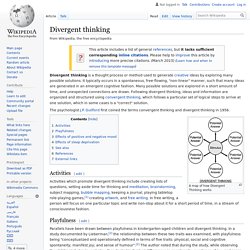
It is often used in conjunction with its cognitive opposite, convergent thinking, which follows a particular set of logical steps to arrive at one solution, which in some cases is a ‘correct’ solution. By contrast, divergent thinking typically occurs in a spontaneous, free-flowing, 'non-linear' manner, such that many ideas are generated in an emergent cognitive fashion. Many possible solutions are explored in a short amount of time, and unexpected connections are drawn. After the process of divergent thinking has been completed, ideas and information are organized and structured using convergent thinking. The psychologist J.P. Index of /files/resources/articles. Open Humanities Press. Compartmentalization. 5 Kinds of Nonbusiness Books Every Entrepreneur Needs to Read. Scan the unavoidable lists of things successful entrepreneurs have in common and you’ll soon see the importance of books.
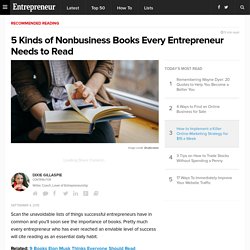
Pretty much every entrepreneur who has ever reached an enviable level of success will cite reading as an essential daily habit. Related: 9 Books Elon Musk Thinks Everyone Should Read. 10 Reasons to Go Pro. Why Don't You Try This?: Truth. I heart intelligence Beat The System With This List Of 40 Free Educational Websites. Videos. Hans Rosling explains a very common misunderstanding about the world: That saving the poor children leads to overpopulation.
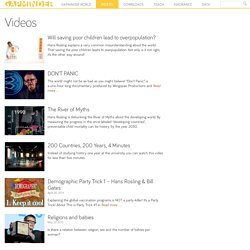
Not only is it not right, it’s the other way around! The world might not be as bad as you might believe! “Don’t Panic” is a one-hour long documentary produced by Wingspan Productions and Read more … Hans Rosling is debunking the River of Myths about the developing world. By measuring the progress in the once labeled “developing countries”, preventable child mortality can be history by the year 2030. Instead of studying history one year at the university, you can watch this video for less than five minutes. Explaining the global vaccination programs is NOT a party-killer! The Time for Separate Movements has Passed. All of my blogs are inspired by something.
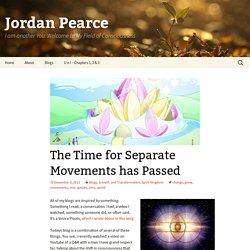
Something I read, a conversation I had, a video I watched, something someone did, or often said. It’s a Vesica Pisces, which I wrote about in this blog. Todays blog is a combination of several of these things. You see, i recently watched a video on Youtube of a Q&A with a man I have grand respect for, talking about the shift in consciousness that we’re experiencing on this planet. I don’t want to say who it is, for i’m not sure that’s important. Thought Experiments. 1.
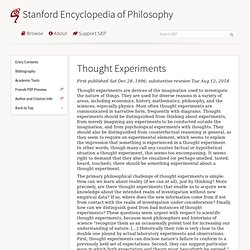
Common Features of Thought Experiments Thought experiments are conducted for diverse reasons in a variety of areas, be it in the moral, mathematical, or natural realm (see, e.g., De Mey, 2006). We leave aside those that simply entertain. Some thought experiments fulfil a specific function within a theory (see Boorsboom et al., 2002). Others are executed because it is impossible to run the experimental scenario in the real world (see Sorensen, 1992, pp. 200–202). Theorizing about thought experiments usually turns on the details or the patterns of specific cases. Learn. "Learn from yesterday, live for today, hope for tomorrow.

The important thing is not to stop questioning. " — Albert Einstein As you might expect, Mensa members have a great respect for Einstein, and most of them would probably agree with this quote. American Mensa supports learning at all ages and stages of life. Untitled. Green Aristotle: Virtue, Contemplation and the Ethics of Sustainability. How Muscle Memory Works and How It Affects Your Success. Cat_Ownership_Immunocomp_Web.pdf. Matriculate. Learn Synonyms, Learn Antonyms. Pedagogy. Pedagogy (/ˈpɛdəɡɒdʒi/, /ˈpɛdəɡoʊdʒi/, or /ˈpɛdəɡɒɡi/[1][2]) is the discipline that deals with the theory and practice of education; or the study and practice of 'how best to teach'.
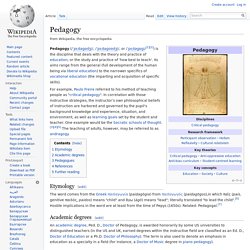
Its aims range from the general (full development of the human being via liberal education) to the narrower specifics of vocational education (the imparting and acquisition of specific skills). For example, Paulo Freire referred to his method of teaching people as "critical pedagogy". In correlation with those instructive strategies, the instructor's own philosophical beliefs of instruction are harbored and governed by the pupil's background knowledge and experience, situation, and environment, as well as learning goals set by the student and teacher. One example would be the Socratic schools of thought.[3][4][5] The teaching of adults, however, may be referred to as andragogy. Etymology[edit] Academic degrees[edit] An academic degree, Ped. Pedagogues[edit] Douris Man with wax tablet References[edit]
Speed Reading and Accelerated Learning. (Photo: Dustin Diaz) How much more could you get done if you completed all of your required reading in 1/3 or 1/5 the time?

Increasing reading speed is a process of controlling fine motor movement—period. This post is a condensed overview of principles I taught to undergraduates at Princeton University in 1998 at a seminar called the “PX Project”. The below was written several years ago, so it’s worded like Ivy-Leaguer pompous-ass prose, but the results are substantial. Alan Watts - The Book: The Taboo Against Knowing Who You Are (full, audio book) - YouTube. PSFK - Live Work Play Better. Learning How to Learn. The State of Digital Education. How Video Games Use Education and Learning Elements. Collection:buckminsterfuller. Well Read. Deep Web. General knowledge. Books. Classification schemes. Education. Forest School in Practice. Wikipedia.org and pages.
Chronological. Interesting Search Engines. Philosophy. Archive. Teaching. Videos/Lectures. MUST SEE Documentary Films. Education. Teacher tools. Life & lessons. Rome Reborn. Mission Rome Reborn is an international initiative whose goal is the creation of 3D digital models illustrating the urban development of ancient Rome from the first settlement in the late Bronze Age (ca. 1000 B.C.) to the depopulation of the city in the early Middle Ages (ca.
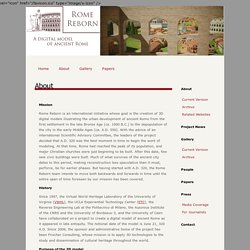
A.D. 550). With the advice of an international Scientific Advisory Committee, the leaders of the project decided that A.D. 320 was the best moment in time to begin the work of modeling. At that time, Rome had reached the peak of its population, and major Christian churches were just beginning to be built. After this date, few new civic buildings were built. History Purpose of the 3D model. George III of the United Kingdom. George III (George William Frederick; 4 June 1738[1] – 29 January 1820) was King of Great Britain and King of Ireland from 25 October 1760 until the union of these two countries on 1 January 1801, after which he was King of the United Kingdom of Great Britain and Ireland until his death.
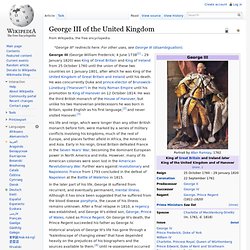
He was concurrently Duke and prince-elector of Brunswick-Lüneburg ("Hanover") in the Holy Roman Empire until his promotion to King of Hanover on 12 October 1814. He was the third British monarch of the House of Hanover, but unlike his two Hanoverian predecessors he was born in Britain, spoke English as his first language,[2] and never visited Hanover.[3] Audioboo. Ancient Greece: a world in evolution. THEOI GREEK MYTHOLOGY, Exploring Mythology & the Greek Gods in Classical Literature & Art. AncientEgyptMap.jpg (JPEG Image, 841x1474 pixels) Time line of art history. World History : HyperHistory.
Ancient Greece. Ancient Greece - The British Museum. Food in Ancient Greece. The Greek diet consisted of foods that were easily raised in the rocky terrain of Greece’s landscape. Breakfast was eaten just after sunrise and consisted of bread dipped in wine. Lunch was again bread dipped in wine along with some olives, figs, cheese or dried fish. Supper was the main meal of each day. It was eaten near sunset. It consisted of vegetables, fruit, fish, and possibly honey cakes. Fish was the main source of protein in the Greek diet. Wine was the main drink in ancient Greece.
The Greeks did not have any eating utensils, so they ate with their hands. Men often gathered for dinner parties called symposiums. Daily Life in Ancient Greece Children Clothing Fashion Food Home Life Marriage Men and Women's Roles Shopping Women Historyphoto101.com - Great History Photos, Right Price Follow our updates on Facebook or Twitter Pictures on this page are for viewing only. Please see Pictures Galleries for Royalty Free images for Educational uses.